The Dell Venue 8 7000 Series Review
by Brandon Chester on March 12, 2015 8:00 AM EST- Posted in
- Tablets
- Dell
- Android
- Mobile
- Venue 8 7000
GPU Performance
GPU performance is another important aspect of a device, and with display resolutions increasing there is always a need for more GPU power to drive more pixels. In the eyes of many consumers, Intel is not typically associated with speedy GPU performance, particularly in the mobile space. Many readers commented on the poor performance of Intel's HD Graphics in the Stream 7 review. However, one of the ways Intel's Moorefield chips are differentiated from some other chips in the Atom line is that they use PowerVR graphics. In the case of the Venue 8, it uses the PowerVR G6430 which was used previously in Apple's A7 chip.
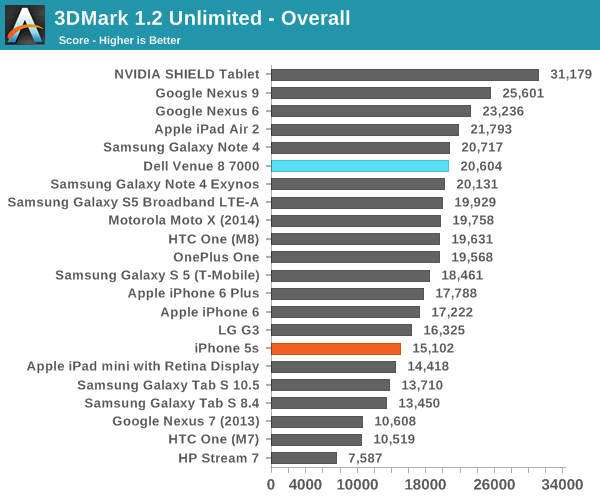
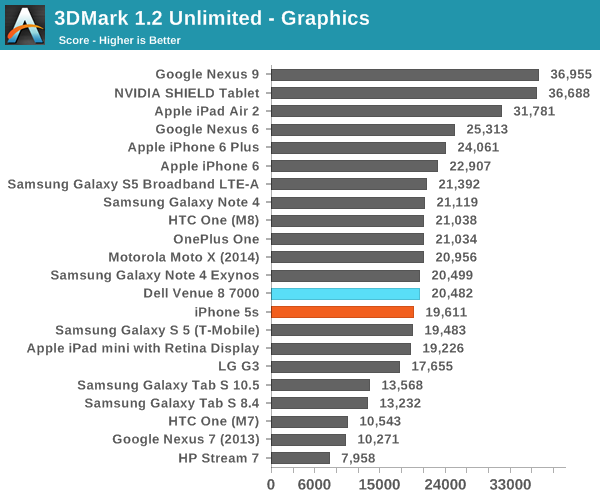
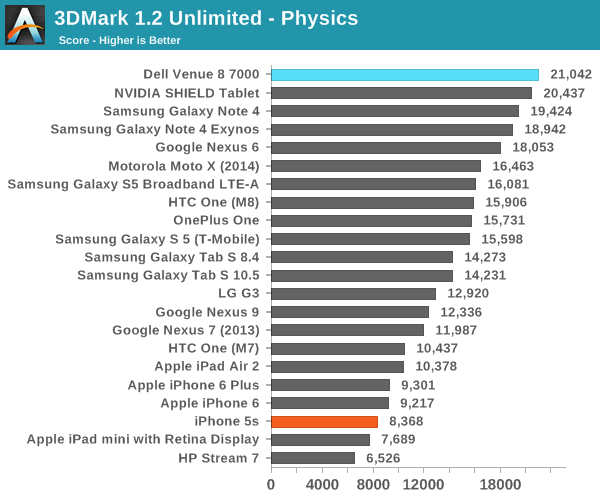

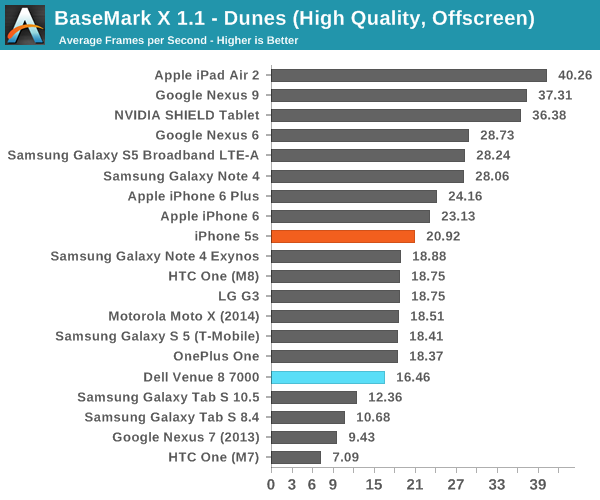
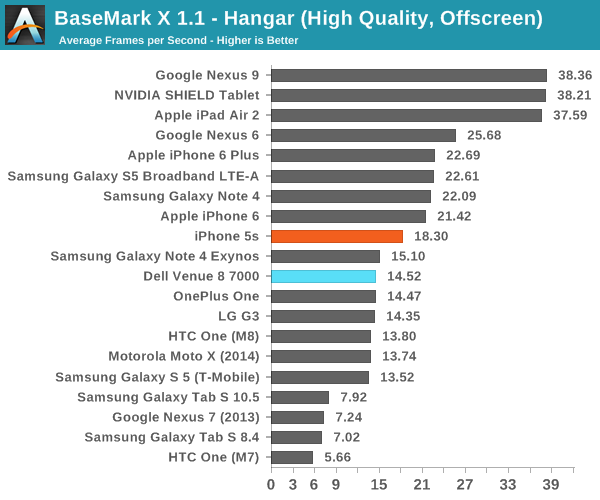
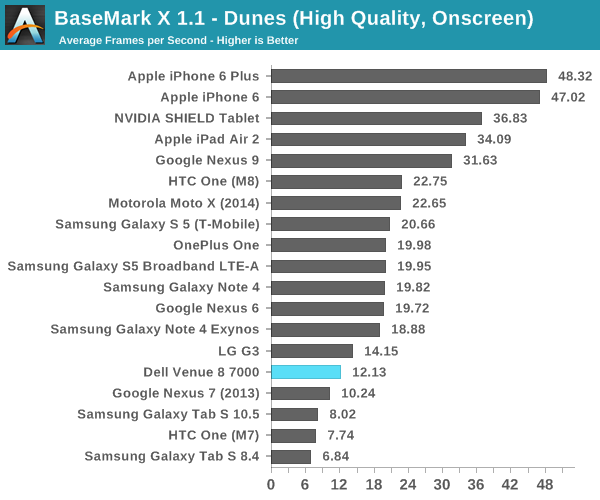
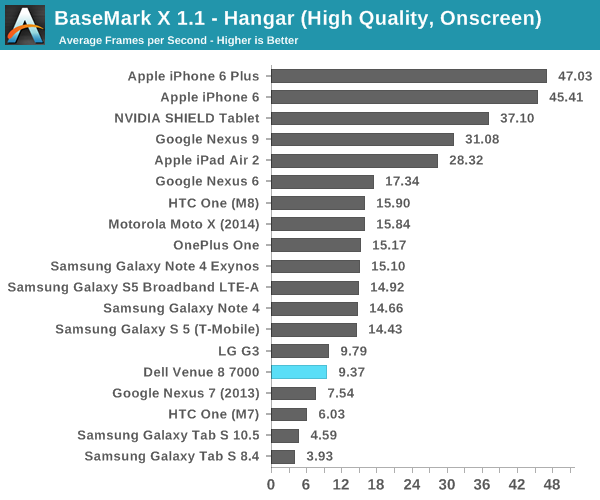
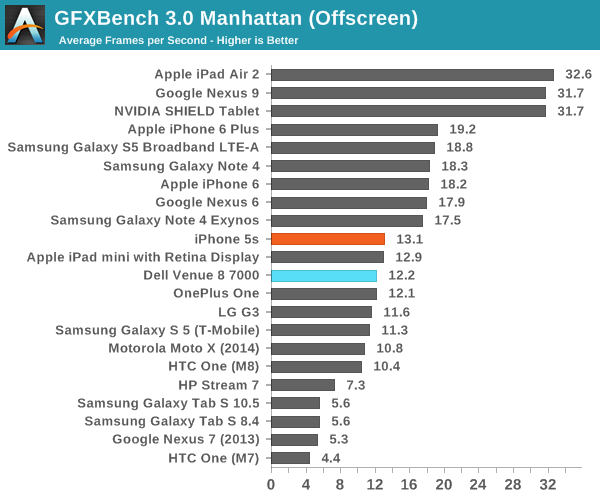
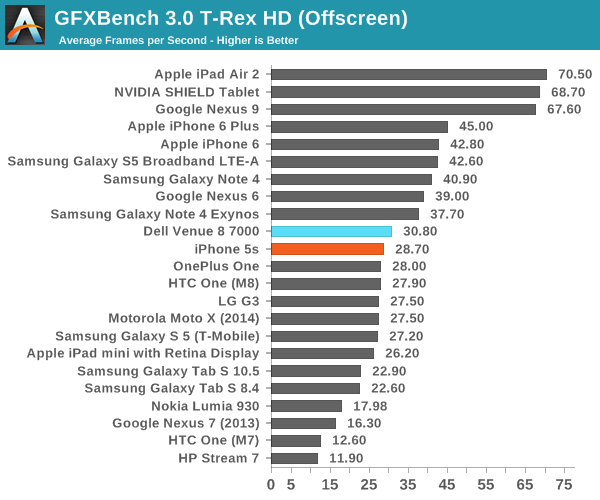
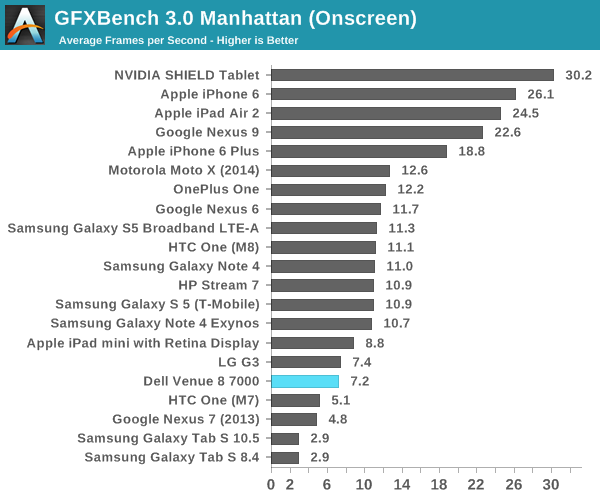
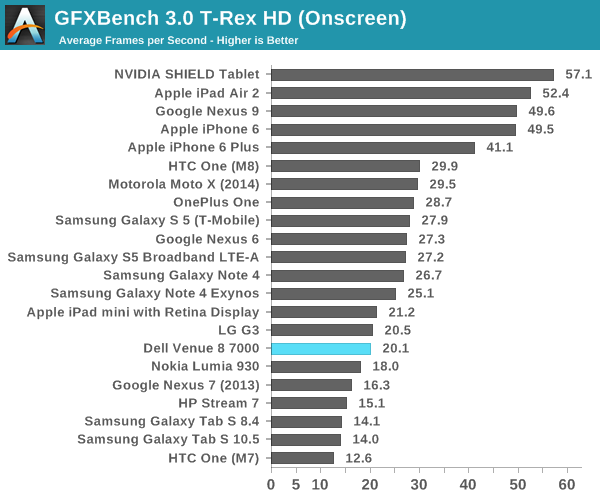
There has historically been a noticable gap in performance between a given PowerVR chip implemented in an iOS device, and the same GPU in an Android device. Due to drivers and other software factors, the performance of the Android device is typically slower. Because of this, I've marked the iPhone 5s on all the charts except for the onscreen ones so comparisons can be drawn between the performance of the G6430 GPU on different operating systems. In the 3DMark graphics test, the Venue 8 actually scores higher than the iPhone 5s, and in the GFXBench tests there is not a large difference between the two devices. In Basemark X there is a sizable performance difference between the two devices in favor of the iPhone, but overall I don't think anyone should be concerned about massive differences in GPU performance between the G6430 running on iOS and it running on Android.
When evaluating the Venue 8's GPU performance on its own, it can hardly be said that it's slow. However, it's now competing with Apple's 8 core Rogue GPU in A8X, and NVIDIA's Kepler graphics in Tegra K1. The devices with those GPUs end up performing between two and three times faster than the Venue 8 in many cases, and with Tegra K1 that GPU power is available in NVIDIA's Shield Tablet which undercuts the Venue 8 at only $299. GPU performance has simply moved onward from when G6430 was leading the pack, and although the Venue 8 isn't exactly slow, it's outgunned by other devices that meet and even beat its price.
NAND Performance
The performance of a device's internal storage has never been a large point of focus in the past. Mobile device manufacturers don't advertise anything about their storage beyond the capacity. However, the speed of a device's NAND can have a significant impact on performance. Slow memory can be what bottlenecks a system's performance when any sort of heavy reading or writing is occurring in the background, which occurs more often than one would think due to background applications and tasks like automatically downloading and installing app updates.
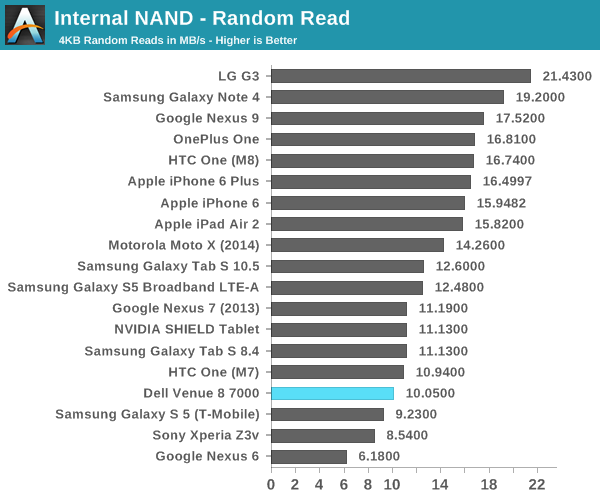

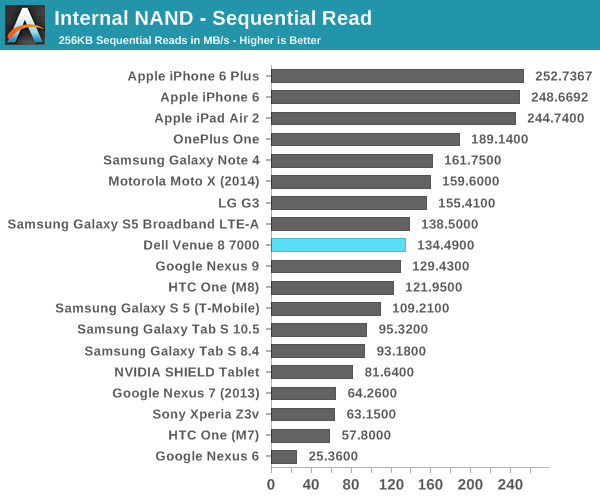
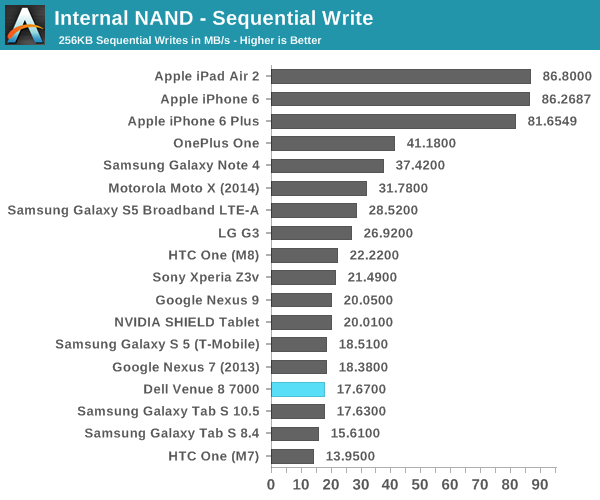
In all of our tests, the Venue 8 is decidedly average. There's no situation where it shines at the top, but also no cases where it's significantly worse than the competition. I wouldn't expect the Venue 8's storage speeds to cause any performance issues for users, though it would be nice to see at 32GB NAND option at this price.










89 Comments
View All Comments
Brandon Chester - Friday, March 13, 2015 - link
According to Dell, there is no update yet. Hardwarezone must be mistaken.GeekBrains - Wednesday, March 25, 2015 - link
Checked with DELL support and it's available already.PC Perv - Thursday, March 12, 2015 - link
Z3580 is more than competitive but the tablet is sluggish? Did you not think of checking whether Intel is cheating the benchmarks? I am sure you would have, if you were reviewing tablets from other vendors.And you keep parroting "AMOLED not made by Samsung," (I counted no less than 3 times). Then who made the screen? How do you know it is not made by Samsung, and if you have that information why not share it?
Oh and please keep it to recommendation for users. Your trying to advise an OEM is rather funny.
coolhardware - Thursday, March 12, 2015 - link
I would like to know more about the screen as well!It seems to be tied with Samsung as the highest pixel density tablet (non-phone) display out there?!
http://pixensity.com/list/tablet/:
Samsung Galaxy Tab Pro 8.4 (2014)
Samsung Galaxy Tab S 8.4 (2014)
Dell Dell Venue 8 7840 (2015)
All three of these have:
8.4″ 31.71 square inches (7.1″x4.5″) 2560×1600 16:10 359.39 PPI
JoshHo - Friday, March 13, 2015 - link
All of our benchmarks are designed to defeat benchmark detection mechanisms. The issues with performance are due to Android 4.4 and Dalvik. We saw massive improvements in performance for almost any device updated from 4.4 to 5.0.Brandon's statement regarding AMOLED displays refers to the device OEM.
While we welcome feedback, our writers are human. Please avoid personal attacks.
PC Perv - Friday, March 13, 2015 - link
You two are surely protective each other. I know the feeling.akdj - Friday, March 13, 2015 - link
You must. With that hamdleakdj - Friday, March 13, 2015 - link
(Sp!). HandleSushisamurai - Sunday, March 15, 2015 - link
I actually prefer recommendations to OEM - sure it may be considered subliminal messaging to the readers, but I'd like to think the review community like AT helped submerse the cheating done on android phones back in the day. AT was one of the first in terms of big review sites that caught the cheating and called OEMs on it, which in turn made us readers also aware and called them on it. There's all so many cases where they've done a laptop review, made some recommendations to OEM, and the next gen laptop remedied the issue. Maybe AT wasnt the sole deciding factor for the change, but every little bit helps when it comes to consumer advocacy to big corporations. We as consumers also benefit from their recommendations, so long as their recommendations are logical and objectiveSushisamurai - Sunday, March 15, 2015 - link
Lol, subvert, not submerse